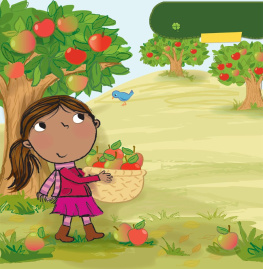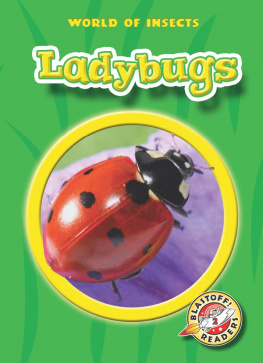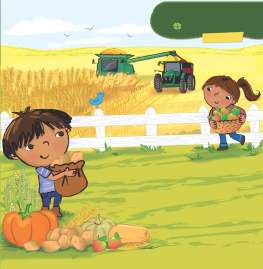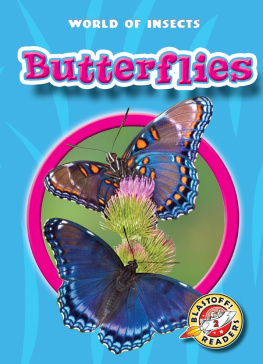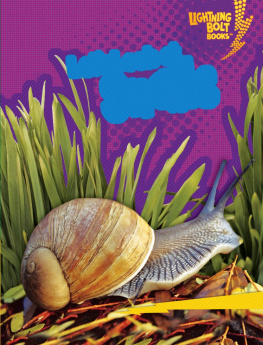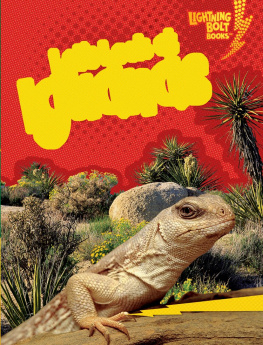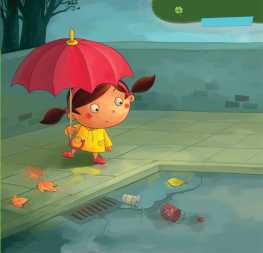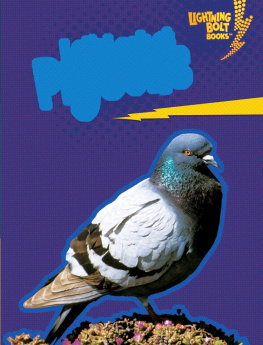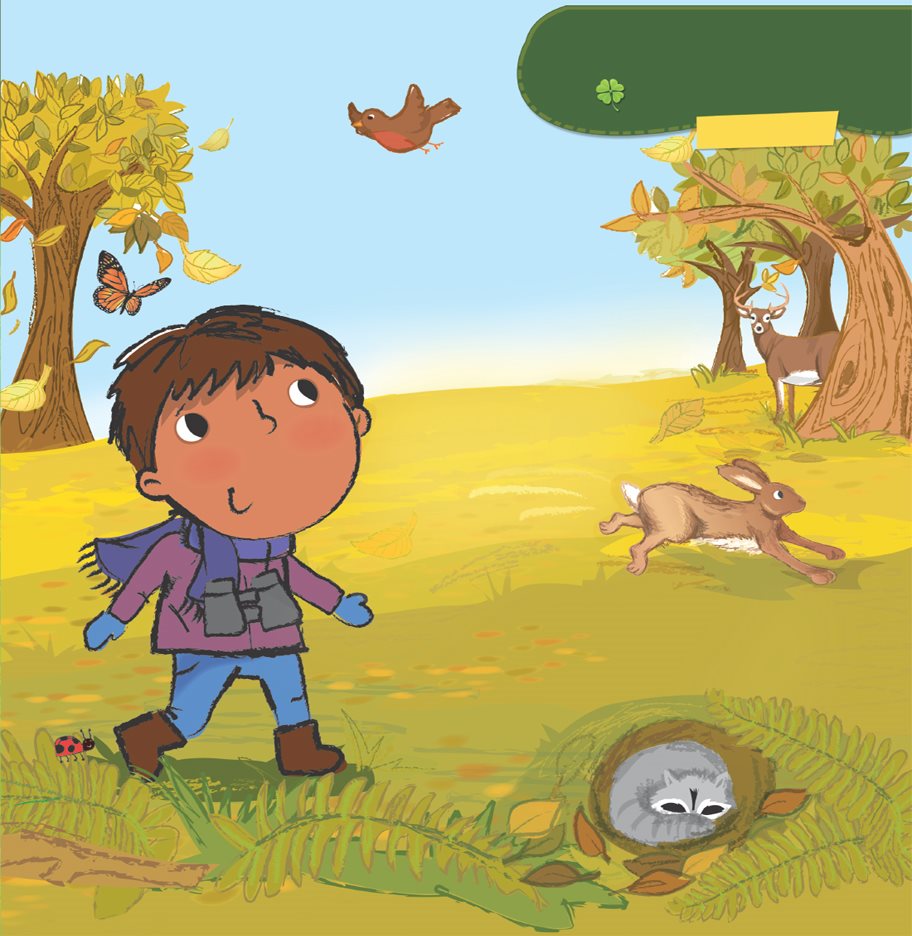Cl verleaf books
Falls Here!
Animals
in Fall
Preparing
for Winter
Martha E. H. Rustad
Illustrated by Amanda Enright
For my husband M. E. H. R.
Text and illustrations copyright 2012 by Lerner Publishing Group, Inc.
All rights reserved. International copyright secured. No part of this
book may be reproduced, stored in a retrieval system, or transmitted
in any form or by any meanselectronic, mechanical, photocopying,
recording, or otherwisewithout the prior written permission of Lerner
Publishing Group, Inc., except for the inclusion of brief quotations in an
acknowledged review.
Millbrook Press
A division of Lerner Publishing Group, Inc.
241 First Avenue North
Minneapolis, MN 55401 U.S.A.
Website address: www.lernerbooks.com
Main body text set in Slappy Inline 18/28.
Typeface provided by T26.
Library of Congress Cataloging-in-Publication Data
Rustad, Martha E. H. (Martha Elizabeth Hillman), 1975
Animals in fall : preparing for winter / by Martha E. H. Rustad ;
illustrated by Amanda Enright.
p. cm. (Cloverleaf books--falls here!)
Includes index.
ISBN 9780761350668 (lib. bdg. : alk. paper)
1. Animal behaviorJuvenile literature. 2. AutumnJuvenile literature.
3. WinterJuvenile literature. I. Enright, Amanda, ill. II. Title.
QL751.5.R875 2012
578.43dc22 2010053468
Manufactured in the United States of America
1 BP 7/15/11

TABLE OF CONTENTS
Chapter One
Animals in Fall
Brr!
The fall breeze gives me chills.
My jacket keeps me
warm. But what do
wild animals do in fall?
Animals know cool weather and shorter
days mean summer is over. In fall, animals
get ready for winter. Some animals go
south. Some go to sleep. And some change.
Animals that go south
in the fall migrate.
Animals that sleep for
the winter hibernate.
Chapter Two
Some Animals Go South
Whoosh! Gray whales spout through their blowholes.
Gray whales have
their babies near
Mexico. The waters there
are safe and warm.
All summer, they eat to build up a fat called blubber.
In fall, gray whales swim from Alaska to Mexico.
They live off the blubber as they migrate.
Alaska
Mexico
Flutter!
Monarch butterflies fly south in fall.
They usually fly all morning.
They eat in the afternoon.
They rest all night.
They cannot live in cold weather. They migrate
as far as 3,000 miles (4,800 kilometers).
Millions of monarch
butterflies rest together in
trees. The branches of the
trees sometimes bend down
from the weight of so many
butterflies.
Honk! Canada geese fly low
across the sky. They form a V- shape.
When northern lakes freeze, Canada geese
migrate south. They stop to eat and rest
on water open along the way.
A flock of Canada
geese often flies the
same route each year.
It also stops to rest
in the same places.
Chapter Three
Some Animals Sleep
Grr! Black bears gobble fruits and
nuts in the fall. They gain as much as
pounds (14 kilograms) each week.
Black bears look for a small den.
They sleep in this safe place
when cold weather comes.
Black bears hibernate for most
of winter. But sometimes, they
wake up on very warm days.
They might go look for food.
Then they go back to sleep.
Ssss! Rattlesnakes slither to their dens in fall.
They hibernate in caves or holes in the ground
that will not freeze.
Hundreds of snakes may gather in one place.
Rattlesnakes often return to the same den each year.
Young rattlesnakes are born
in fall. They sometimes do
not eat until spring.
Chapter Four
Some Animals Change
Hop! Snowshoe hares
change color in fall.
Their brown fur helps
them hide most of the year.
But in winter, they must be
white to match the snow.
This color protects
them from animals
that might eat them.
Snowshoe hares stay
very still when they
sense danger.
Munch! White - tailed deer
crunch acorns and grind leaves in fall.
Eating lots of food helps deer get
extra fat on their bodies. They live
off their fat during the winter.
Food is harder to find in winter.
White- tailed deer grow
thicker coats in the fall. Their
coats keep them warm.
Chapter Five
Ready for Winter


